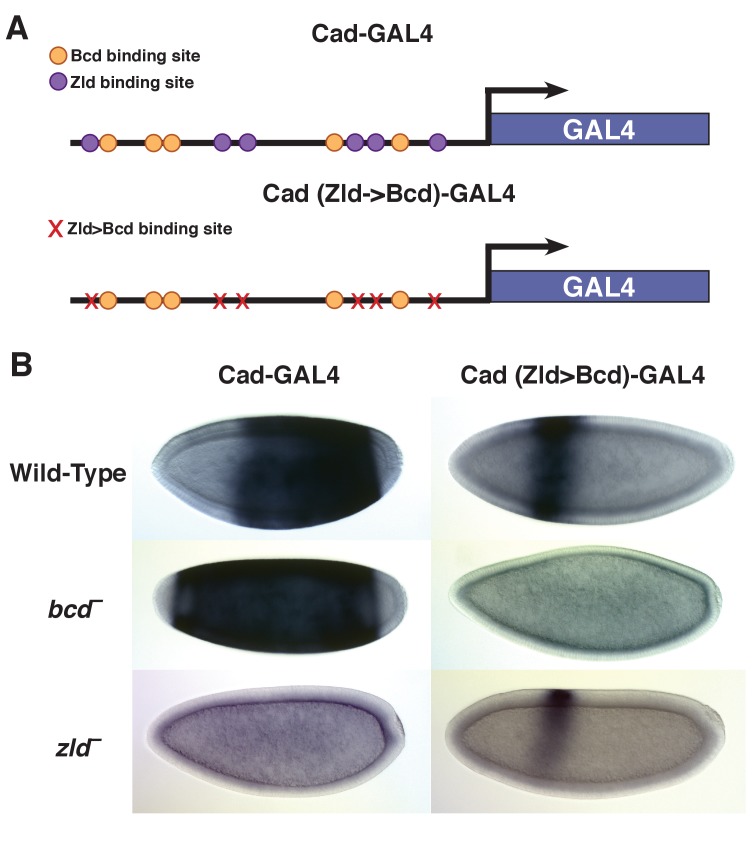(
A) Schematic of the Vienna Tile enhancer reporter for
caudal, containing 5 Zld and 6 Bcd binding sites. The embryos carry transgenic insertions of enhancer reporters that contain either the wild-type enhancer sequence, 6 Bcd binding sites and no Zld sites, or 5 Zld sites and no Bcd sites, respectively. With no Zld sites, the enhancer does not drive expression of the reporter gene. With no Bcd sites, the enhancer drives posterior expression of the reporter. This enhancer loses accessibility in
zld– embryos as measured by ATAC-seq, but remains accessible in
bcd– embryos. (
B) Schematics and expression patterns of reporter constructs HC45 and HC45 +4 Zld sites (HC45.4Z) generated as described in
Xu et al. (2014). A third construct (bottom panel) was generated in which the 4 extra Zld binding sites were replaced with 4 extra Bcd binding sites. As shown in
Xu et al. (2014), the addition of Zld sites causes the previously inactive DNA fragment to drive gene expression in an anterior domain. Here we show that addition of Bcd sites in the same position as the Zld sites also results in expression from the enhancer, in an anterior stripe.


